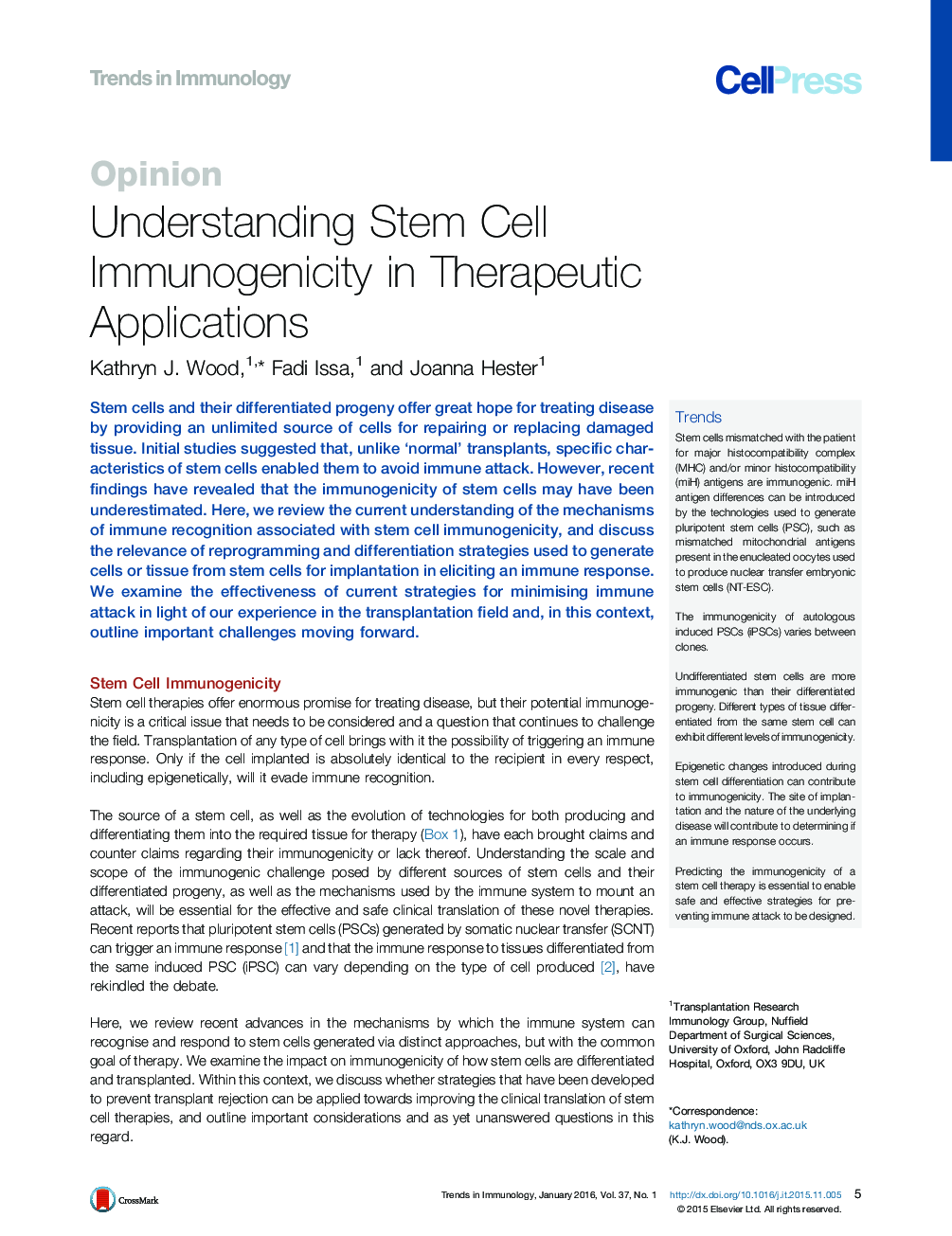| Article ID | Journal | Published Year | Pages | File Type |
|---|---|---|---|---|
| 4359701 | Trends in Immunology | 2016 | 12 Pages |
Stem cells and their differentiated progeny offer great hope for treating disease by providing an unlimited source of cells for repairing or replacing damaged tissue. Initial studies suggested that, unlike ‘normal’ transplants, specific characteristics of stem cells enabled them to avoid immune attack. However, recent findings have revealed that the immunogenicity of stem cells may have been underestimated. Here, we review the current understanding of the mechanisms of immune recognition associated with stem cell immunogenicity, and discuss the relevance of reprogramming and differentiation strategies used to generate cells or tissue from stem cells for implantation in eliciting an immune response. We examine the effectiveness of current strategies for minimising immune attack in light of our experience in the transplantation field and, in this context, outline important challenges moving forward.
TrendsStem cells mismatched with the patient for major histocompatibility complex (MHC) and/or minor histocompatibility (miH) antigens are immunogenic. miH antigen differences can be introduced by the technologies used to generate pluripotent stem cells (PSC), such as mismatched mitochondrial antigens present in the enucleated oocytes used to produce nuclear transfer embryonic stem cells (NT-ESC).The immunogenicity of autologous induced PSCs (iPSCs) varies between clones.Undifferentiated stem cells are more immunogenic than their differentiated progeny. Different types of tissue differentiated from the same stem cell can exhibit different levels of immunogenicity.Epigenetic changes introduced during stem cell differentiation can contribute to immunogenicity. The site of implantation and the nature of the underlying disease will contribute to determining if an immune response occurs.Predicting the immunogenicity of a stem cell therapy is essential to enable safe and effective strategies for preventing immune attack to be designed.
